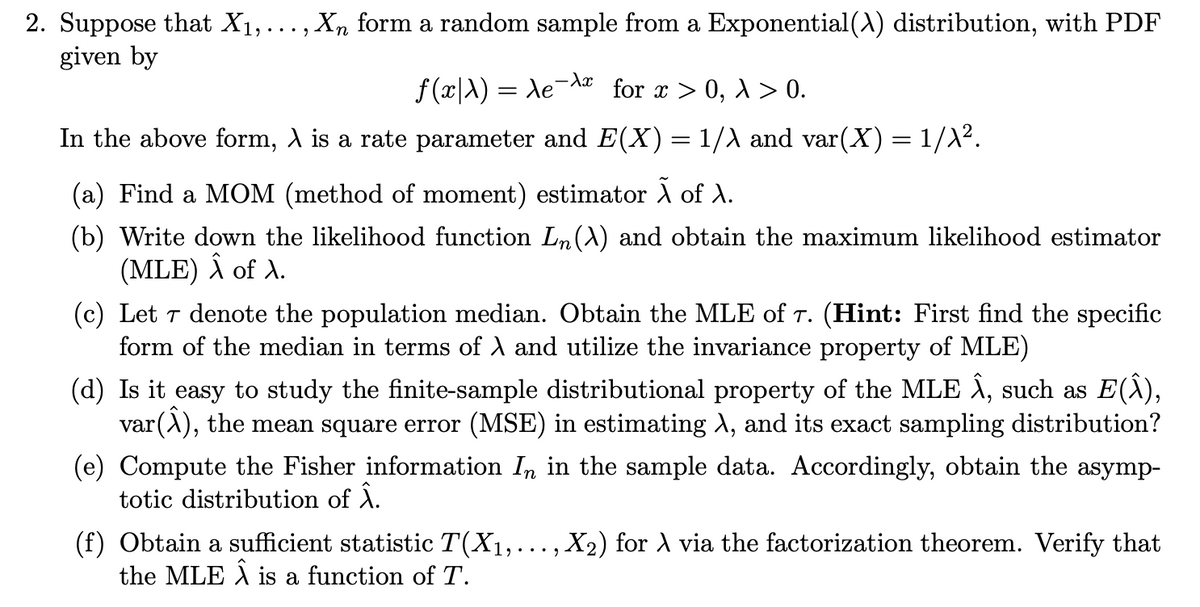(c) Let 7 denote the population median. Obtain the MLE of T. (Hint: First find the specific form of the median in terms of A and utilize the invariance property of MLE) (d) Is it easy to study the finite-sample distributional property of the MLE Â. such as E(X).
(c) Let 7 denote the population median. Obtain the MLE of T. (Hint: First find the specific form of the median in terms of A and utilize the invariance property of MLE) (d) Is it easy to study the finite-sample distributional property of the MLE Â. such as E(X).
A First Course in Probability (10th Edition)
10th Edition
ISBN:9780134753119
Author:Sheldon Ross
Publisher:Sheldon Ross
Chapter1: Combinatorial Analysis
Section: Chapter Questions
Problem 1.1P: a. How many different 7-place license plates are possible if the first 2 places are for letters and...
Related questions
Question
Just C please

Transcribed Image Text:2. Suppose that X₁,..., Xn form a random sample from a Exponential(\) distribution, with PDF
given by
f(x|λ) = Ae¯λx for x > 0, λ > 0.
In the above form, À is a rate parameter and E(X) = 1/λ and var(X) = 1/λ².
(a) Find a MOM (method of moment) estimator à of X.
(b) Write down the likelihood function Ln (A) and obtain the maximum likelihood estimator
(MLE) Â of A.
(c) Let 7 denote the population median. Obtain the MLE of T. (Hint: First find the specific
form of the median in terms of λ and utilize the invariance property of MLE)
(d) Is it easy to study the finite-sample distributional property of the MLE Â, such as E(Â),
var(Â), the mean square error (MSE) in estimating \, and its exact sampling distribution?
(e) Compute the Fisher information In in the sample data. Accordingly, obtain the asymp-
totic distribution of Â.
(f) Obtain a sufficient statistic T(X₁,..., X₂) for À via the factorization theorem. Verify that
the MLE Â is a function of T.
Expert Solution
This question has been solved!
Explore an expertly crafted, step-by-step solution for a thorough understanding of key concepts.
Step by step
Solved in 2 steps with 2 images

Recommended textbooks for you

A First Course in Probability (10th Edition)
Probability
ISBN:
9780134753119
Author:
Sheldon Ross
Publisher:
PEARSON


A First Course in Probability (10th Edition)
Probability
ISBN:
9780134753119
Author:
Sheldon Ross
Publisher:
PEARSON
